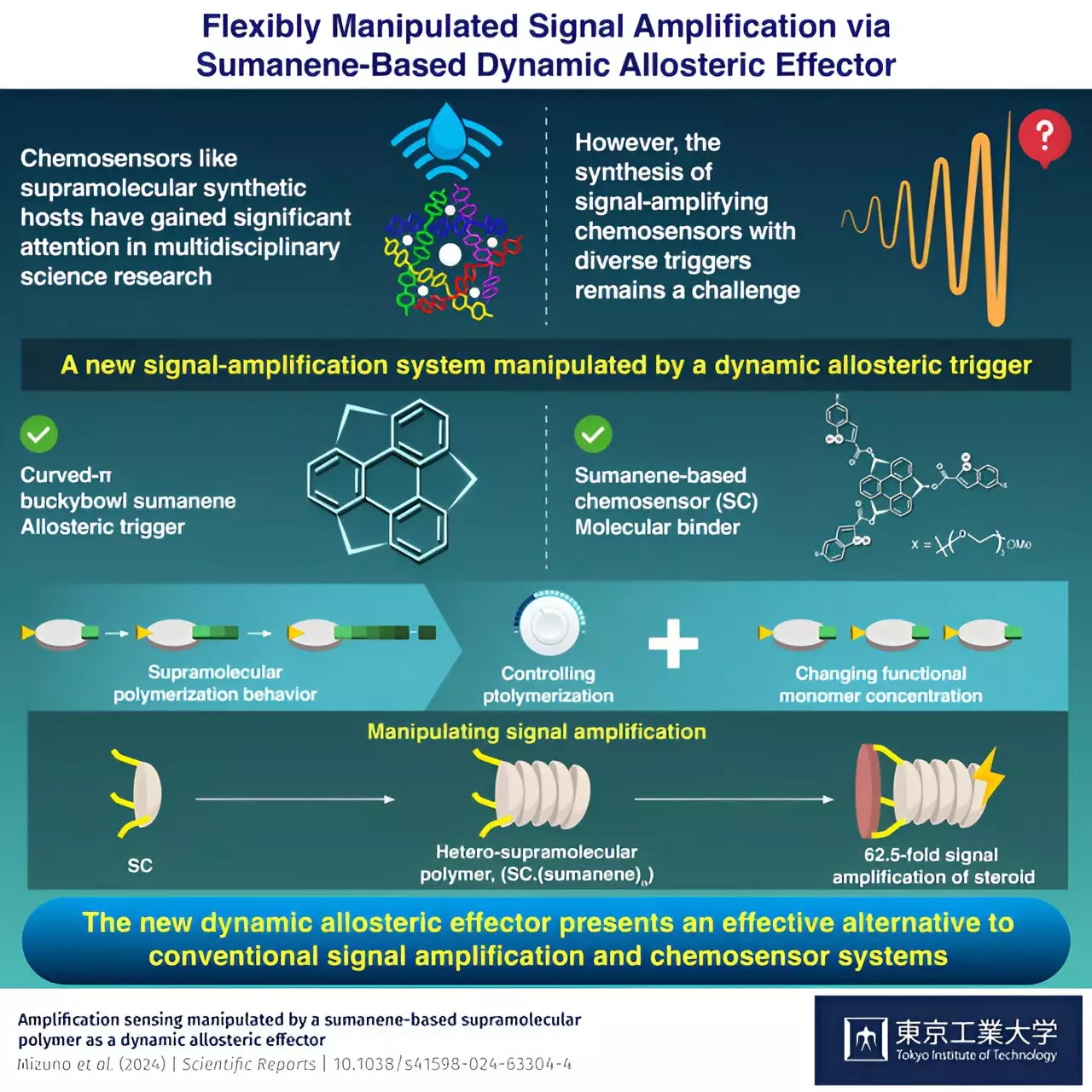Chemical sensors have long been heralded as the unsung heroes of multidisciplinary sciences, playing vital roles in diverse applications ranging from environmental monitoring to biomedical diagnostics. The sheer potential of these devices lies in their ability to provide real-time data through minimal sample sizes and rapid response times. However, despite their promise, the development of advanced signal-amplifying chemosensors has traditionally been fraught with challenges. Challenges aside, a recent study unveiled by a team from Tokyo Institute of Technology heralds a transformative system that could fundamentally enhance chemical sensing technology.
Overcoming Limitations in Conventional Models
At the heart of chemical sensing lies the lock-and-key model, a foundational principle which suggests that substrates fit precisely into their respective receptors, much like a key fits into a lock. While this approach has facilitated significant advancements in molecular recognition, it also presents notable limitations, particularly in sensitivity and efficiency. The model’s inherent constraints mean that enhancing the binding affinity between the sensor and the target is critical for advancing sensor performance. This is where innovations in signal amplification—particularly those inspired by the natural biological phenomenon of allosterism—become pivotal. Allosteric mechanisms, which allow a molecule’s affinity for a substrate to be modulated through the binding of a secondary molecule, offer a promising pathway to boost sensor sensitivity.
A Novel Approach from Tokyo Tech
In a groundbreaking study published in *Scientific Reports*, a research team led by Associate Professor Gaku Fukuhara has introduced a revolutionary signal-amplification system that employs a dynamic allosteric effector—specifically the curved π-buckybowl sumanene—to manipulate the degree of signal output. This system represents a significant leap forward in chemosensor design, showcasing the flexibility and adaptability necessary for next-generation applications. Fukuhara highlights this evolving landscape: “By adjusting the concentration of our functional monomer, we achieved exquisite control over polymerization and, consequently, signal amplification.”
The innovative use of sumanene demonstrates how interdisciplinary approaches can yield novel solutions to age-old problems in chemical sensing. By manipulating the polymerization dynamics, the researchers created a sophisticated sensor capable of responding dynamically to varying concentrations, thereby amplifying signals in a precise manner.
Unveiling the Mechanisms of Amplification
The talented team not only deciphered how to implement flexible allosteric modulation but also offered fascinating insights into the molecular mechanics involved. The phenomenon through which the pristine sumanene molecules create hetero-supramolecular polymers with the chemosensor showcases a previously underexplored area of supramolecular chemistry. The stacking of these molecules on the sensor’s binding site was integral to the observed fluorescence changes—an observable signal that dramatically escalates when target guest molecules are present.
Notably, the success of this system extends beyond academic curiosity; the researchers applied it to biologically relevant compounds such as testosterone and corticosterone, achieving an extraordinary 62.5-fold amplification. This finding underscores the potential for radically enhancing detection capabilities for molecules that are traditionally difficult to sense—floodgates of possibilities open within various scientific realms.
Implications for Future Developments
The implications of this research stretch far beyond the specifics of the study itself. The capacity for tailored chemosensor systems equipped with dynamic respondence mechanisms holds profound promise for a variety of fields. With applications spanning medical diagnostics, environmental analysis, and even food safety, the viability of sensors that adapt based on given stimuli could revolutionize our approach to detection.
Moreover, Fukuhara suggests this innovative chemosensor could serve as a blueprint for future research endeavors: “Our work illustrates the power of supramolecular polymerization in manipulating signal amplification. This approach not only addresses current challenges in sensor sensitivity but also lays groundwork for entirely new classes of chemosensors designed for challenging target recognition.”
In a world increasingly reliant on precise measurements and data-driven decisions, advancements in chemical sensor technology like this are not just beneficial; they are imperative. The exploration and implementation of such sophisticated systems stand to enhance our understanding of complex biochemical interactions and pave the way for novel diagnostic methods that can profoundly impact human health and environmental sustainability.

